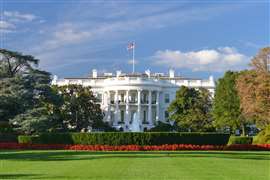Will Biden’s executive order expanding apprenticeships help labour shortages?
08 March 2024
US President Joe Biden wrote in his most recent executive order that his administration’s agenda involves “driving the creation of well-paying jobs”.
 The White House in Washington, DC, US. (Image: Adobe Stock)
The White House in Washington, DC, US. (Image: Adobe Stock)
Biden added that another focus was improving students’ and workers’ “access to education and training for the good jobs in their communities” through government-registered programs, but the announcement has already received criticism.
The order directed US federal agencies to emphasise infrastructure investment and job creation through the promotion of federally-registered apprenticeship programs. The stated goal is to address workforce needs, enhance job quality, and foster labour-management cooperation among federal agencies.
Additionally, the order seeks to create agency communication to coordinate registered apprenticeship initiatives and encourages agencies to expand apprenticeship programs while implementing labour-management forums throughout the executive branch.
The order created the Registered Apprenticeship Interagency Working Group, which will be managed by officials from four US agencies.
Results may be ‘disruptive’
However, the US Association of Builders and Contractors (ABC), via Ben Brubeck – its VP of regulatory, labour, and state affairs – referred to the order as “overreach” and stated the results are “likely to be very disruptive and will undermine taxpayer investments in the construction of infrastructure, clean energy, and domestic manufacturing projects.”
Brubeck took issue with the order’s promotion and expansion of the Government-Registered Apprenticeship Program (GRAP), which he believed was ineffective in reducing the construction industry worker shortage.
“America’s government-registered apprenticeship system, which had an enrolment of 250,000 apprentice participants and graduated between 40,000 and 45,000 apprentices in FY 2023, is not keeping up with construction industry demand for skilled craft professionals,” said Brubeck.
In his opinion, the order “creates an artificial demand for contractors and apprentices participating in GRAPs by directing federal agencies to require or incentivize GRAP participation on federal and federally assisted projects.”
Brubeck added that he believed the order favoured unionised contractors, as a result.
ABC noted that five US states did not report complete GRAP data to the US Department of Labor and “ABC’s figure incorporates rough estimates to account for missing data.”
According to ABC data, the worker deficit remains high: construction jobs openings in the US were logged at 413,000 in January. Approaching the spring and summer months, labour demand should remain high.
“A majority of contractors expect to increase their staffing levels over the next six months, according to ABC’s Construction Confidence Index,” said Anirban Basu, ABC’s chief economist. “[It’s] a sign that the demand for workers should remain strong through at least the first half of the year.”
STAY CONNECTED



Receive the information you need when you need it through our world-leading magazines, newsletters and daily briefings.
CONNECT WITH THE TEAM








